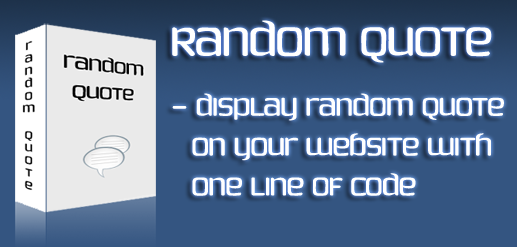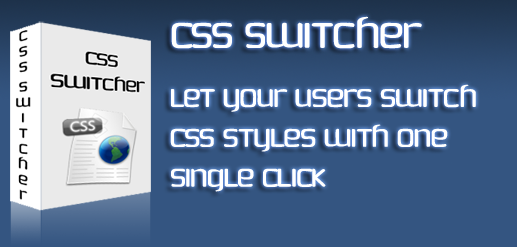GFX Pixelment: Choosing a Good Design Software Stack
When you're looking to craft pixel art for GFX Pixelment, picking the right software stack is crucial. The tools you choose can either unlock your creative potential or hold you back with clunky workflows. You don't want to jump in blind or waste time learning software that isn't a good fit. Before committing, it helps to know what makes each option stand out—and which combinations can give your projects a real edge.
Essential Tools for GFX Pixel Art Design
A solid foundation for GFX pixel art design begins with selecting the appropriate software. Aseprite is often recommended for beginners due to its intuitive interface and features tailored for frame-by-frame animation, such as onion skinning.
For developers focused on game creation, Pixie Engine can streamline asset development and management, which is advantageous for those constructing comprehensive game environments.
Alternatively, GIMP, while initially designed as a raster graphics editor, can be adapted for pixel art through the implementation of custom grids and precise pixel control.
Each of these software options facilitates the creation, animation, and management of pixel art assets, allowing designers to implement their workflows effectively.
Understanding Key Differences: Pixel Art vs. Vector Design
When comparing pixel art and vector design, it's important to recognize that each serves specific visual and practical purposes. Pixel art is created using a grid of pixels, resulting in images that exhibit a blocky aesthetic. This style is particularly prevalent in retro video games and certain nostalgic designs.
Conversely, vector design utilizes mathematical paths and shapes, enabling graphics to be resized infinitely without any degradation in quality.
Editing pixel art typically involves manipulating individual pixels, which can be a meticulous and time-consuming process, but it allows for precise control over each element. Vector design, on the other hand, permits adjustments through the modification of paths and anchor points, providing a more flexible and efficient editing process.
In terms of color, pixel art often employs simple and limited color palettes because of the nature of its grid-based structure. In contrast, vector design accommodates complex gradients and a broad spectrum of colors, making it suitable for designs that require detailed shading and variety.
Sketching Techniques and Digital Drawing Hardware
Beginning with rough sketches is an effective approach for brainstorming concepts without the constraints of perfection. Developing your sketching skills can be enhanced through the use of a digital drawing tablet, such as the Huion 12, which offers a more responsive and natural drawing experience compared to traditional methods.
It's advisable to pair this hardware with established software tools like Adobe Illustrator or Photoshop, which are widely recognized for their support of digital drawing.
Experimenting with different brush settings within these digital environments can facilitate a looser drawing style, potentially leading to new ideas and insights.
Regular practice in these settings not only contributes to skill development but also allows for more efficient iteration on design concepts. This iterative process is an important aspect of the design workflow, as it facilitates quicker adjustments and refinements to ideas.
Layering and Line Art: Building the Foundation
After finalizing your concept through digital sketches, it's crucial to establish a solid foundation with systematic layering and precise line art.
Begin your digital painting by placing your sketch on a distinct layer, allowing for flexible adjustments as needed. Utilize the Pen Tool or Brush Tool to produce clean line art, which is essential for defining the composition and guiding subsequent stages of the artwork.
Organizing your project effectively by keeping sketch and line art layers separate facilitates greater control and streamlines the editing process.
This structured approach not only enhances the efficiency of modifications during the development of the artwork but also contributes to achieving a polished final result.
Proper layering and sharp line work are fundamental components in the process of digital painting, as they significantly influence the overall quality of the artwork.
Adding Color and Effects: Enhancing Visual Depth
To enhance digital artwork, it's important to begin with a solid base color for each shape, utilizing tools such as the Live Paint Bucket for improved efficiency and precision.
Following this foundational step, one can increase the richness of colors by layering additional hues and experimenting with blending modes like Add and Soft Light. The application of shadows and highlights serves to create a three-dimensional effect, enhancing the visual appeal of the artwork.
Incorporating textures and patterns can contribute unique character and complexity, while adjusting opacity can help achieve desired levels of subtlety.
Moreover, employing soft, diffused lighting techniques can improve the overall mood and depth of the design, contributing to a polished and professional appearance.
This approach provides a structured framework for artists aiming to achieve a more dynamic and visually engaging composition in their digital work.
Leveraging AI Features in Modern Design Software
Many designers have observed that AI-powered features in contemporary design software can significantly reduce the time and effort associated with repetitive tasks. By utilizing these AI capabilities, designers can access tools for generating layout suggestions, automating content development, and improving overall productivity.
For instance, software such as Galileo AI enables users to convert simple text inputs into detailed digital designs, allowing for the rapid creation of presentation screens for clients.
Moreover, the incorporation of predictive analytics within design software provides valuable insights into user interactions, facilitating a more streamlined usability testing process.
Additionally, smart layout tools and logic-driven prototypes available in platforms like Adobe XD and UXPin assist designers in creating effective, user-centric experiences with less manual intervention.
Evaluating Free and Paid Options for Your Workflow
When determining whether to utilize free or paid design tools for your workflow, it's important to evaluate the features of each option in the context of your project's specific requirements.
Free design tools may be suitable for smaller tasks or initial learning phases, as they don't require financial investment. However, these tools may have limitations in functionality and support, which could affect efficiency for larger projects.
In contrast, paid design software typically provides a wider range of features, including secure collaboration and advanced editing capabilities. These features can be crucial for more complex projects or when working as part of a team, where effective communication and comprehensive toolsets are often necessary.
It is advisable to test both free and paid options to determine which interface aligns with your workflow preferences and needs.
User experience can significantly impact productivity, so assessing community support and available resources for each tool can also inform your decision. This methodical approach enables you to create a design workflow that aligns with your team's efficiency and project requirements.
Best Practices for Editing and Final Touches
When refining a design, careful attention to editing and final touches is important for achieving a professional appearance.
Utilizing multiple layers allows for better control over line art, colors, and shadows, facilitating quick adjustments. Employing appropriate editing techniques, such as soft lighting and blending modes, can result in smoother transitions and an overall polished appearance.
Incorporating shadows and highlights is essential for adding visual depth, which guides the viewer’s focus toward key elements in the design.
Additionally, utilizing plugins and consulting online tutorials can enhance efficiency in the workflow and improve the quality of the final product.
A thorough final review in the editing software is crucial to ensure that all elements of the design are cohesive, balanced, and visually appealing.
Sharing, Feedback, and Community Resources
Community engagement plays a significant role in the professional development of designers. By sharing work and experiences in a supportive environment, individuals can receive targeted feedback that aids in skill enhancement and confidence building.
Most online forums establish guidelines that promote a balance between self-promotion and resource sharing, which helps make feedback more constructive and accessible.
These platforms often host a variety of resources, such as tutorials and discussions related to specific design processes. Engaging with the community can involve asking for assistance, providing insights, and participating in conversations, all of which contribute to a deeper understanding of design principles and practices.
When individuals actively contribute to their communities, they foster a collaborative environment that supports ongoing learning and knowledge exchange. This dynamic can lead to improved design outcomes and further professional growth.
Developing Your Own Efficient Design Software Stack
When selecting a design software stack, it's important to employ a systematic method that aligns with your project requirements.
Begin by evaluating the specific needs of your projects; this may involve determining whether advanced features are necessary or if basic, free tools will suffice.
To enhance collaboration among team members and stakeholders, consider incorporating platforms such as Figma or InVision, which are designed to facilitate effective communication and project management.
Additionally, integrating AI-powered tools like Galileo AI or Visily can help streamline design tasks by automating repetitive elements or providing intelligent suggestions.
It's also advisable to utilize trial periods offered by many premium tools, allowing you to assess their capabilities before making a financial commitment.
Furthermore, engaging with community resources and tutorials can be beneficial in maximizing the potential of each tool in your stack.
This ongoing education can help you continually improve your design processes and adapt to evolving project needs.
Adopting a thoughtful and analytical approach will contribute to a more efficient and effective design workflow.
Conclusion
When crafting your GFX Pixelment design software stack, remember that the right tools make all the difference. By mixing beginner-friendly apps like Aseprite with advanced options like GIMP and asset managers such as Pixie Engine, you’ll streamline your creative process and boost productivity. Don’t be afraid to experiment and adjust your stack as you grow—your unique workflow will help your pixel art stand out. Embrace innovation, stay curious, and keep pushing your creative boundaries!








